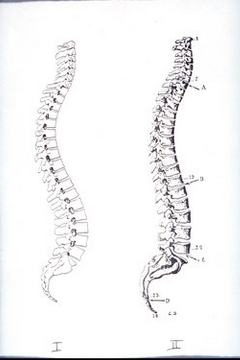Back pain is one of the most common health issues in the United States and worldwide.

In fact, one-half of working Americans experience back pain symptoms each year while one-third of Americans older than mid-50s suffer from chronic pain in their neck or back.
Looking at these statistics, it is hard to believe that back pain is literally nonexistent in some indigenous cultures and their spine discs show almost no signs of degeneration even in older ages.
Esther Gokhale, an acupuncturist in Palo Alto, California, may have found the reason of this miraculous spine health of indigenous people.
Having struggled with severe back pain for two decades, she got frustrated with Western medicine and decided to search for alternative solutions. She thought: “Go to populations where they don’t have these huge problems and see what they’re doing.”
So, Gokhale traveled to the most remote corners of the Earth to study cultures with the lowest rates of back pain and came to some interesting conclusions.
She observed indigenous people to find the differences in how they walked, stood and sat.
“I have a picture in my book of these two women who spend seven to nine hours everyday, bent over, gathering water chestnuts,” Gokhale told npr.org. “They’re quite old. But the truth is they don’t have a back pain.”
After some time, Gokhale found what was common among all those tribes who had no back pain. It was the shape of their spines, which was pretty different from the one of modern Americans.
On the left of the picture below, you will see the S-shaped spine drawn in a modern anatomy book. This is what an American’s spine looks like. On the right, there is the J-shaped spine as drawn in the 1897 anatomy book “Traite d’Anatomie Humaine.” Indigenous people have this kind of spine shape.

“The J-shaped spine is what you see in Greek statues. It’s what you see in young children. It’s good design,” Gokhale said.
Using the results of her research, Gokhale worked hard and finally got her spine into the J shape, which made her back pain go away. As a result, she developed a method which aims to correct one’s posture and thus remove back pain.
Even though Gokhale method seems to be effective, scientists are still not sure if her theory about J-shaped spines is correct. In fact, there are some reasons why people in indigenous cultures have such spines and Americans don’t.
First of all, Americans are much heavier, which contributes to curving the spine. Secondly, indigenous people have a much more active lifestyle than Americans. Just consider how much time you spend sitting every day. Sedentary lifestyle has long been proven to cause back pain and other health problems.
Dr. Praveen Mummaneni from the University of California said: “I think the sedentary lifestyle promotes a lack of muscle tone and a lack of postural stability because the muscles get weak.”
Well, it makes sense. Strong abdominal muscles may be the secret to a good posture and healthy back. So, the most probable reason why Gokhale method works is because the exercises it includes result in muscle strength. And this is exactly why indigenous cultures have no back pain – their active lifestyle enables them to keep their abdominal muscles in shape even as they grow old.
“You’re not going to be able to go from the S- to the J-shaped spine without having good core muscle strength. And I think that’s key here.” Mummaneni said.

Facebook Comments